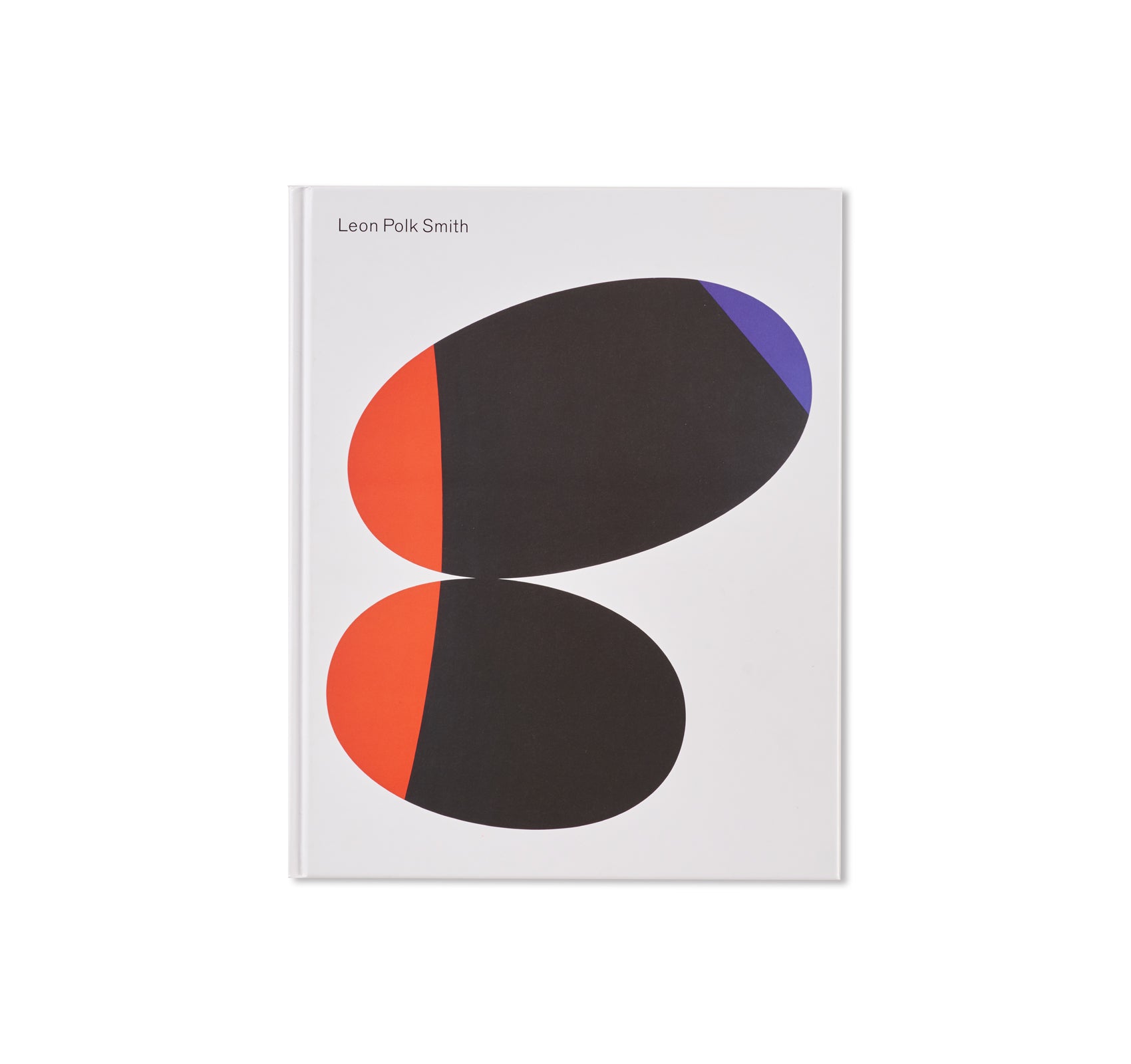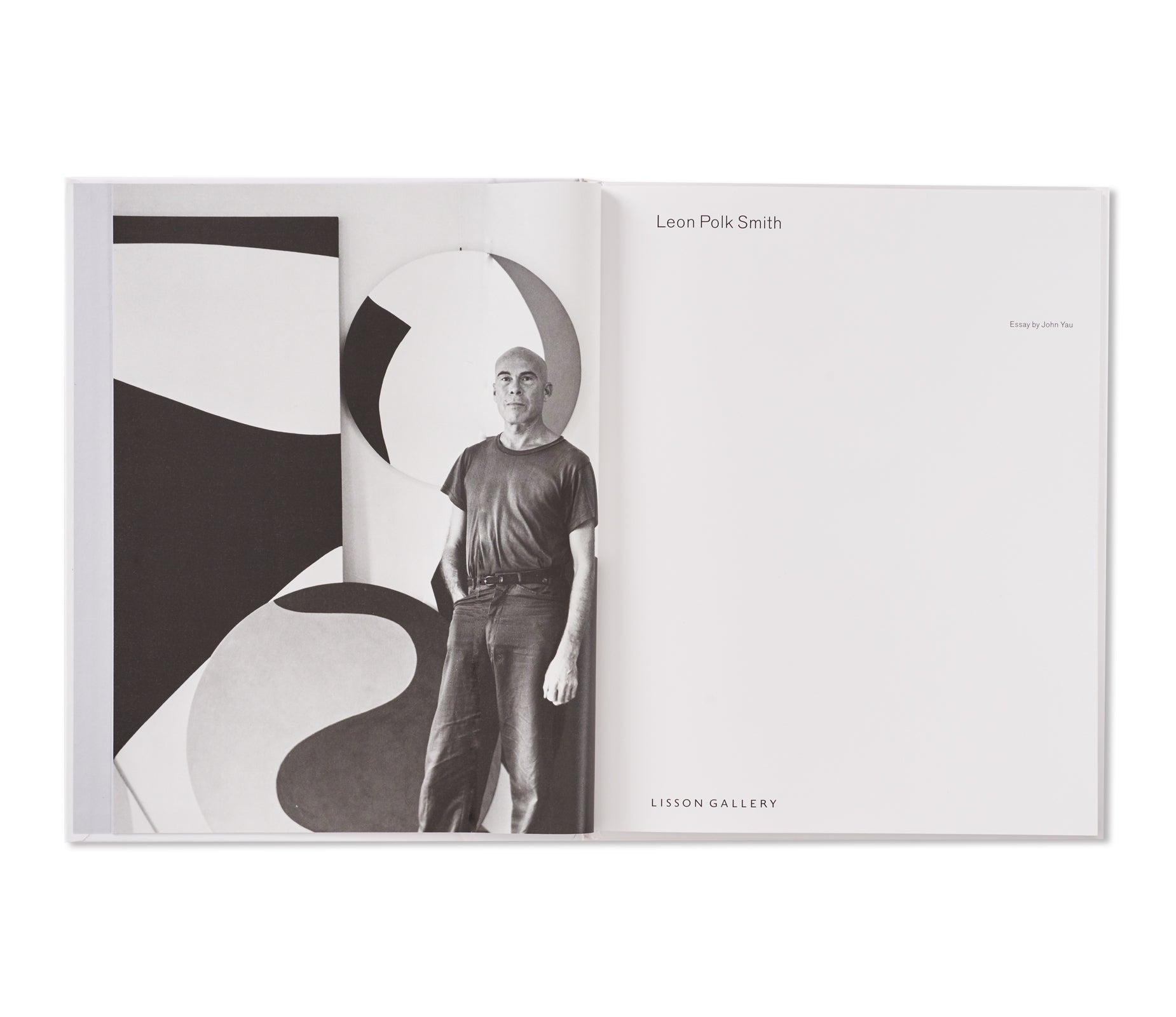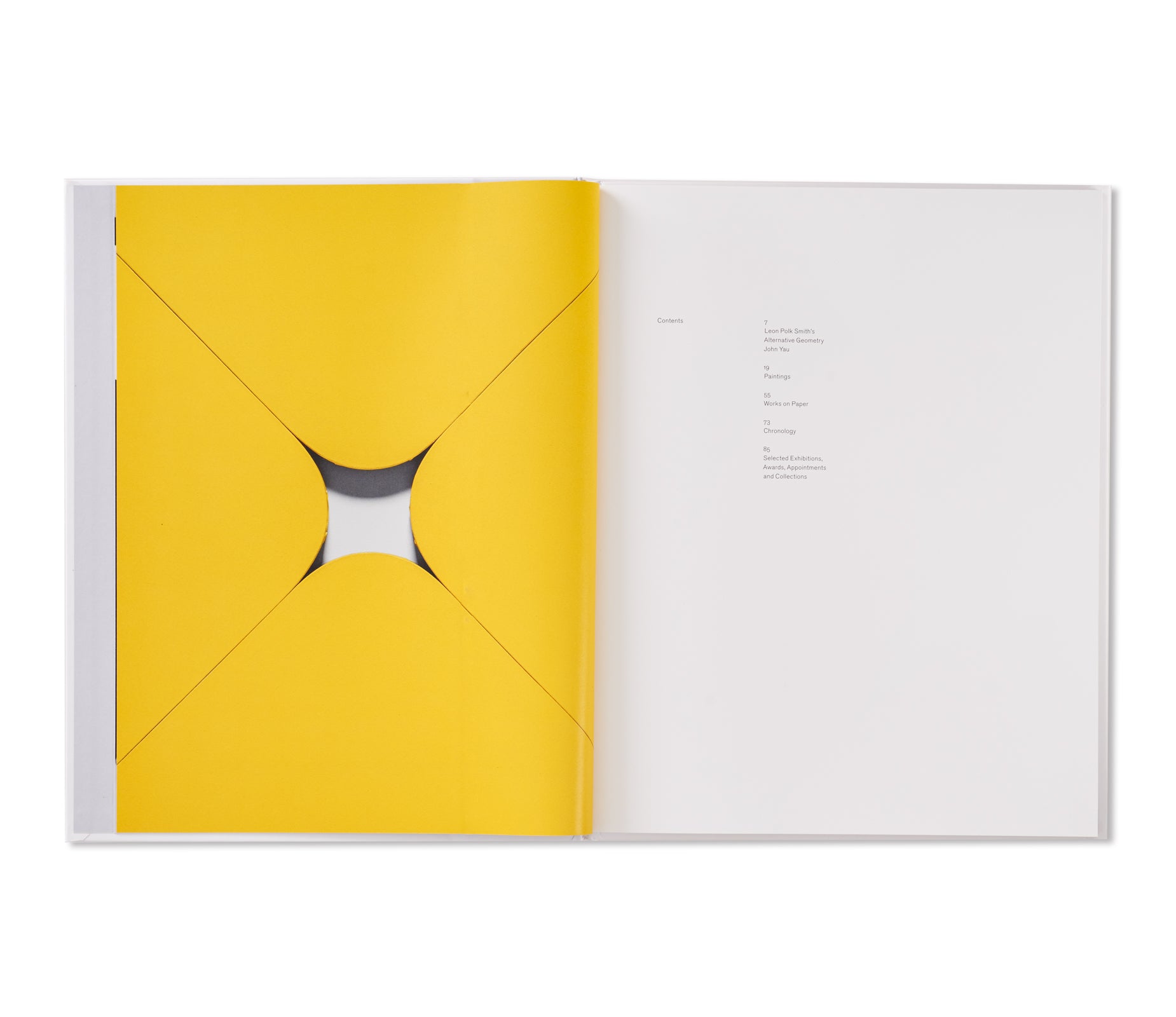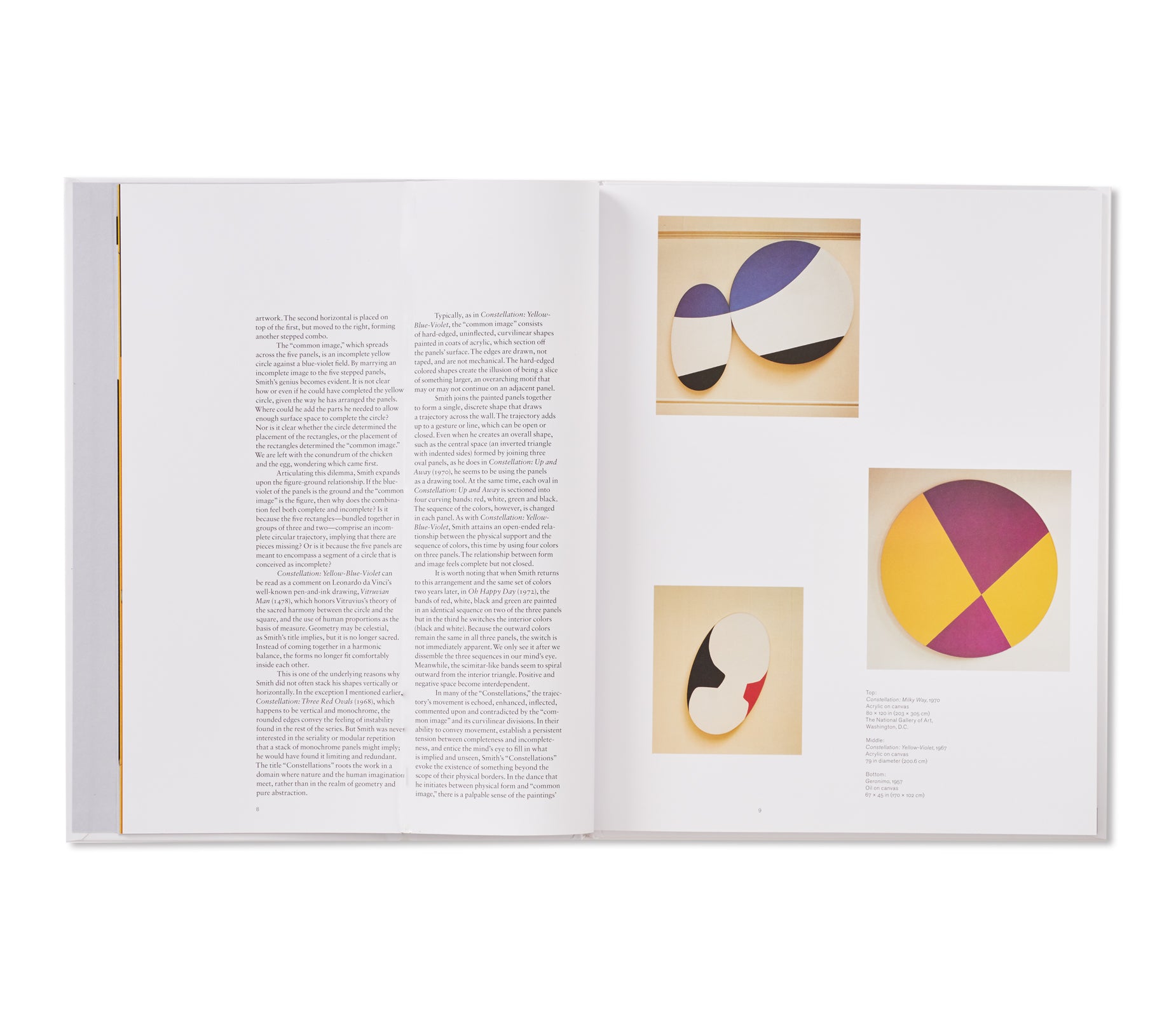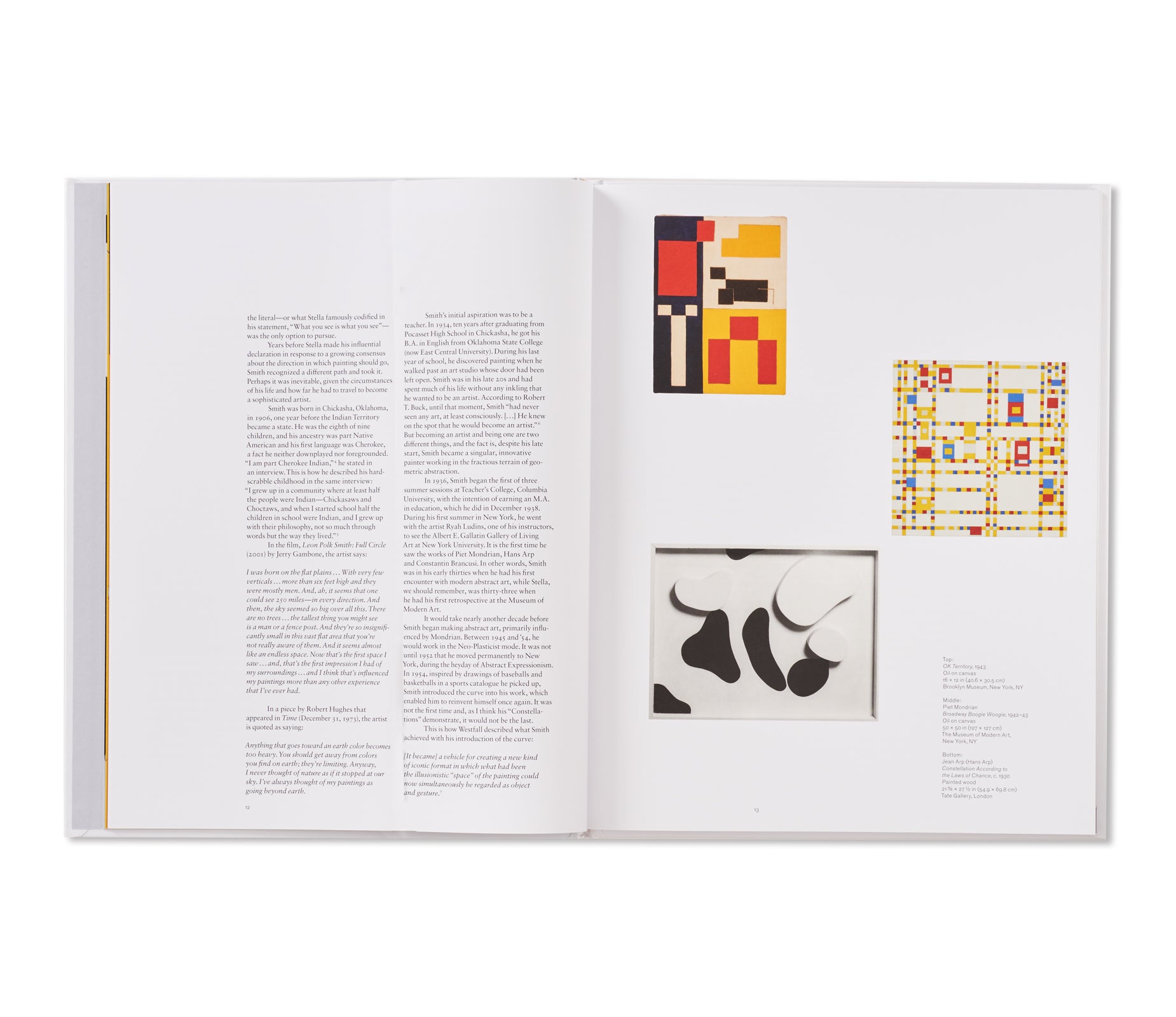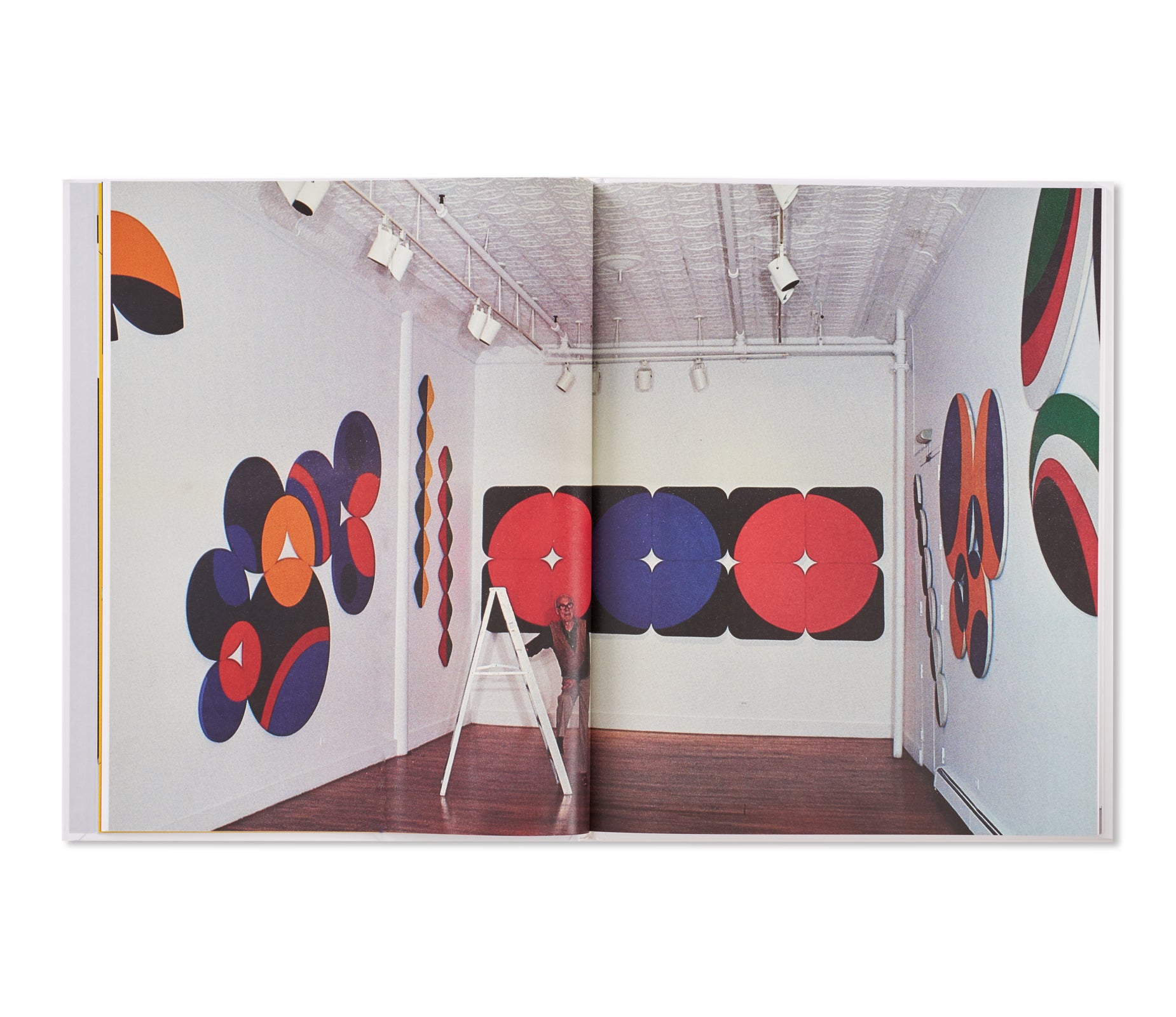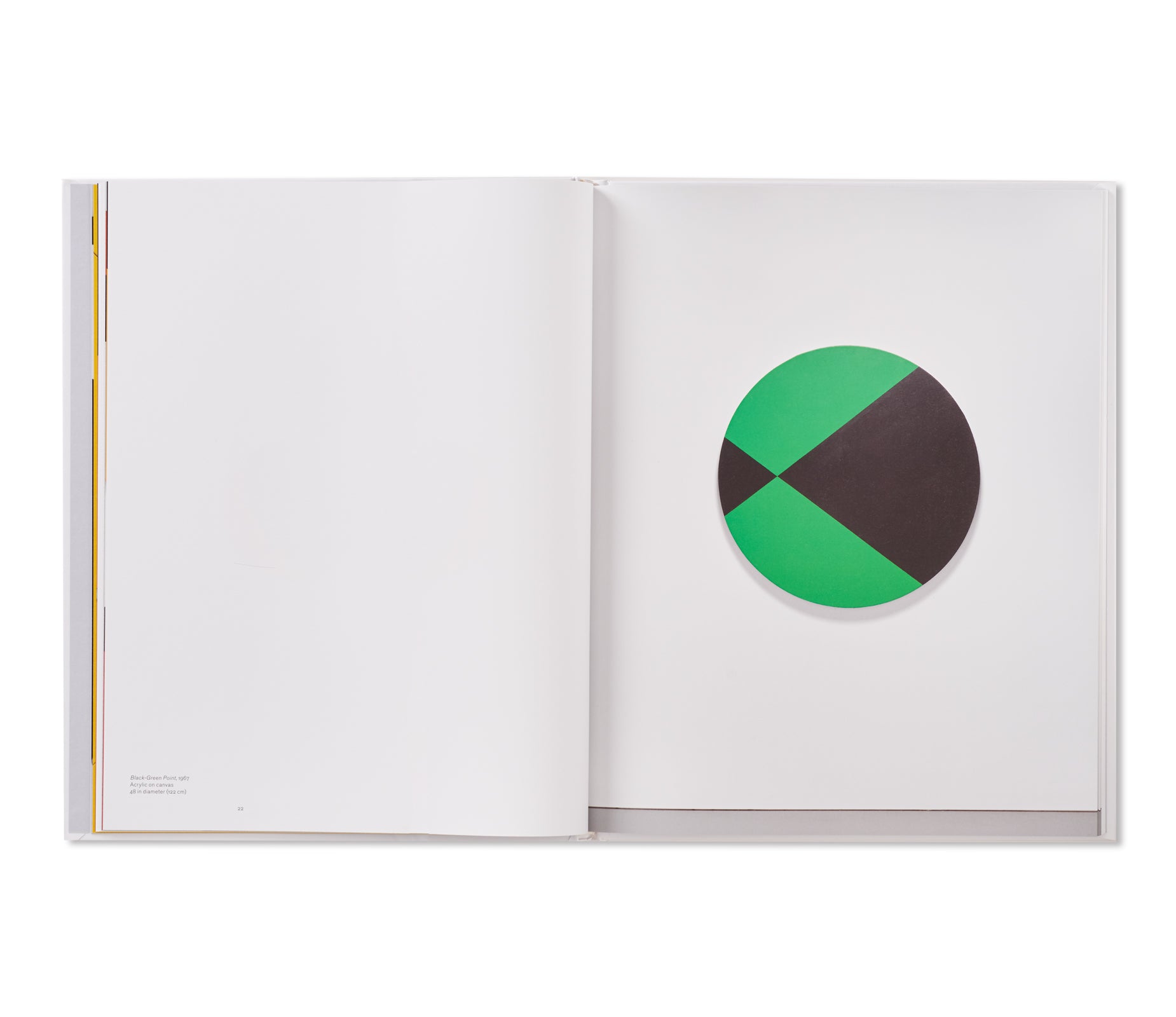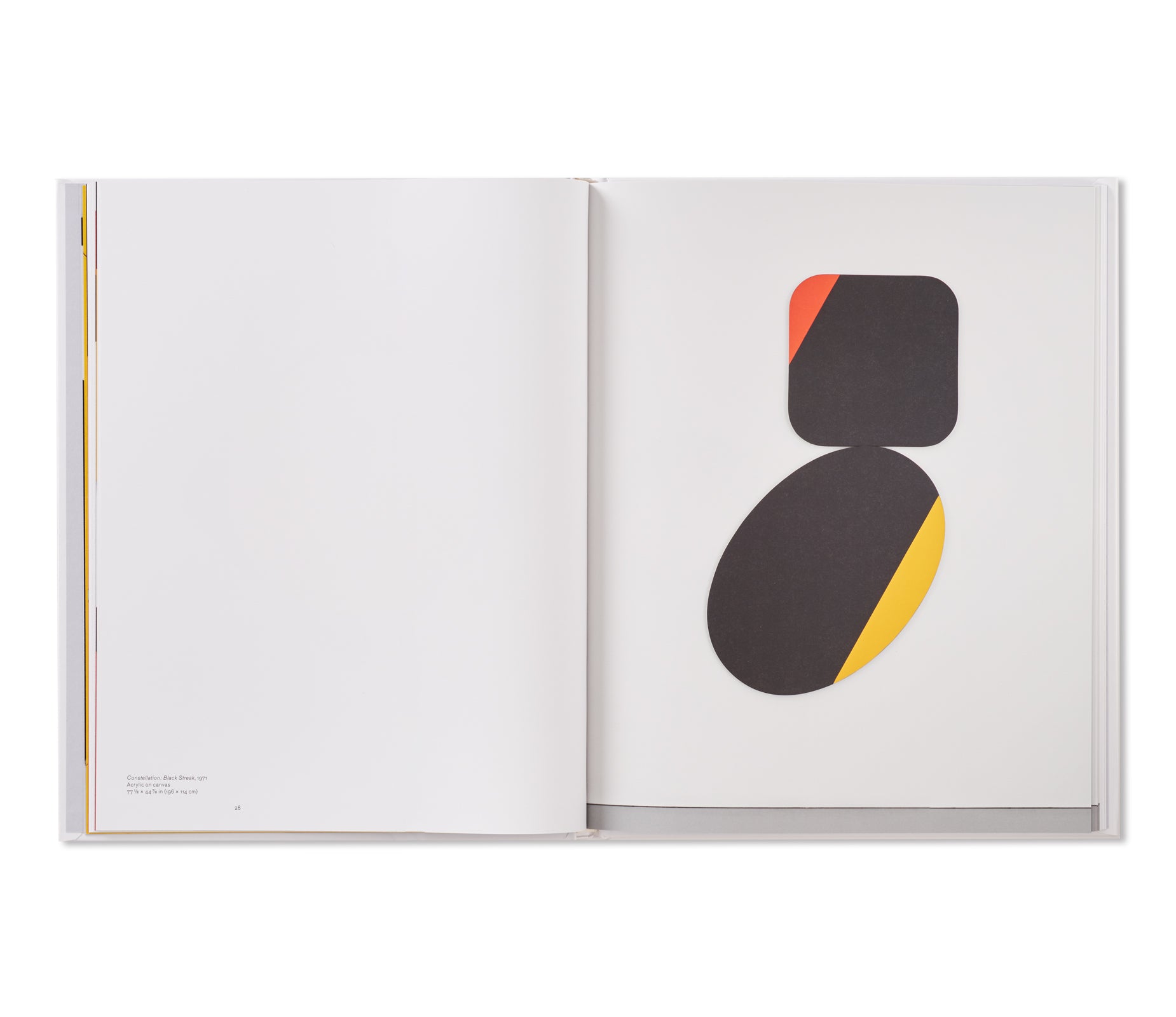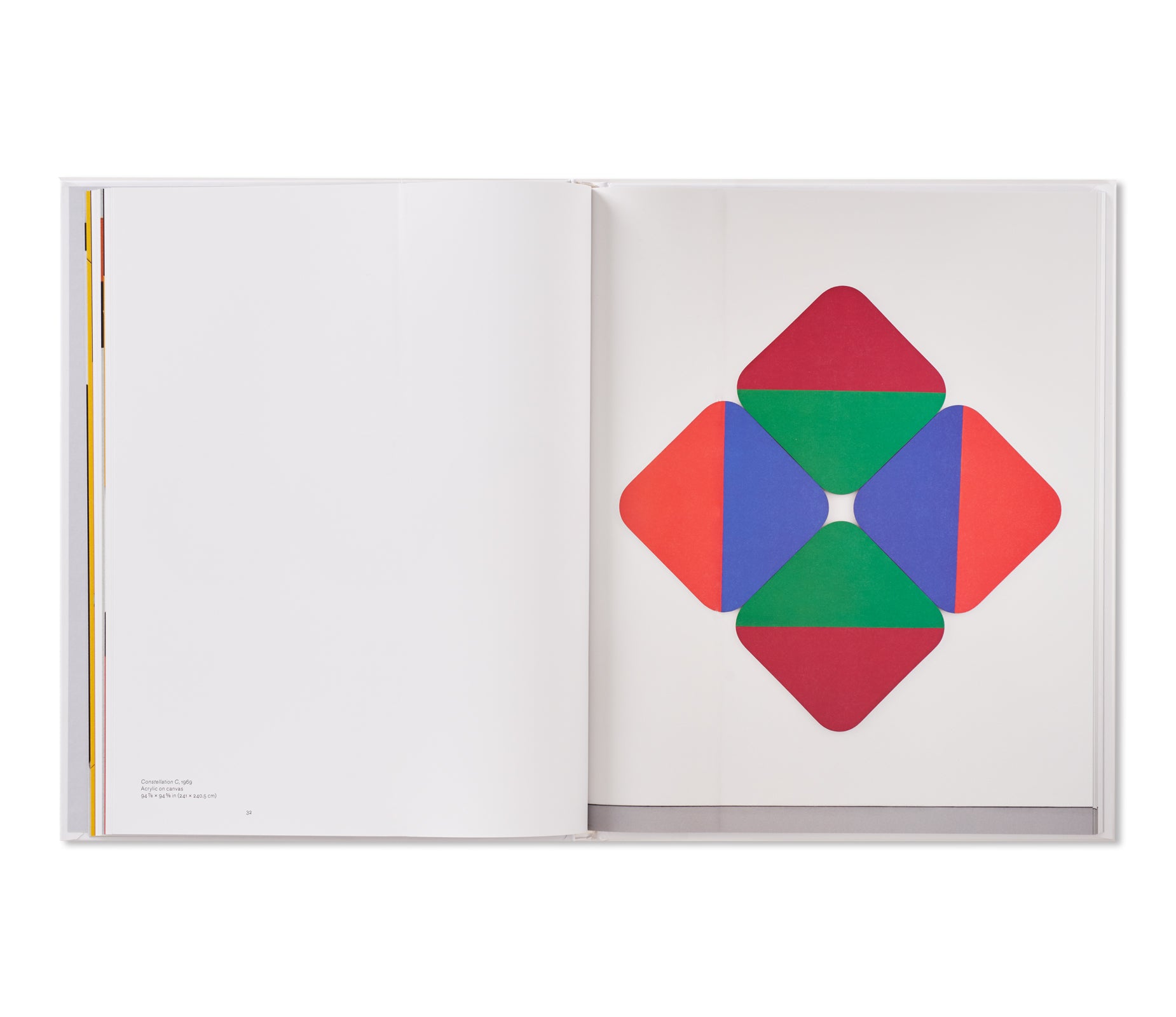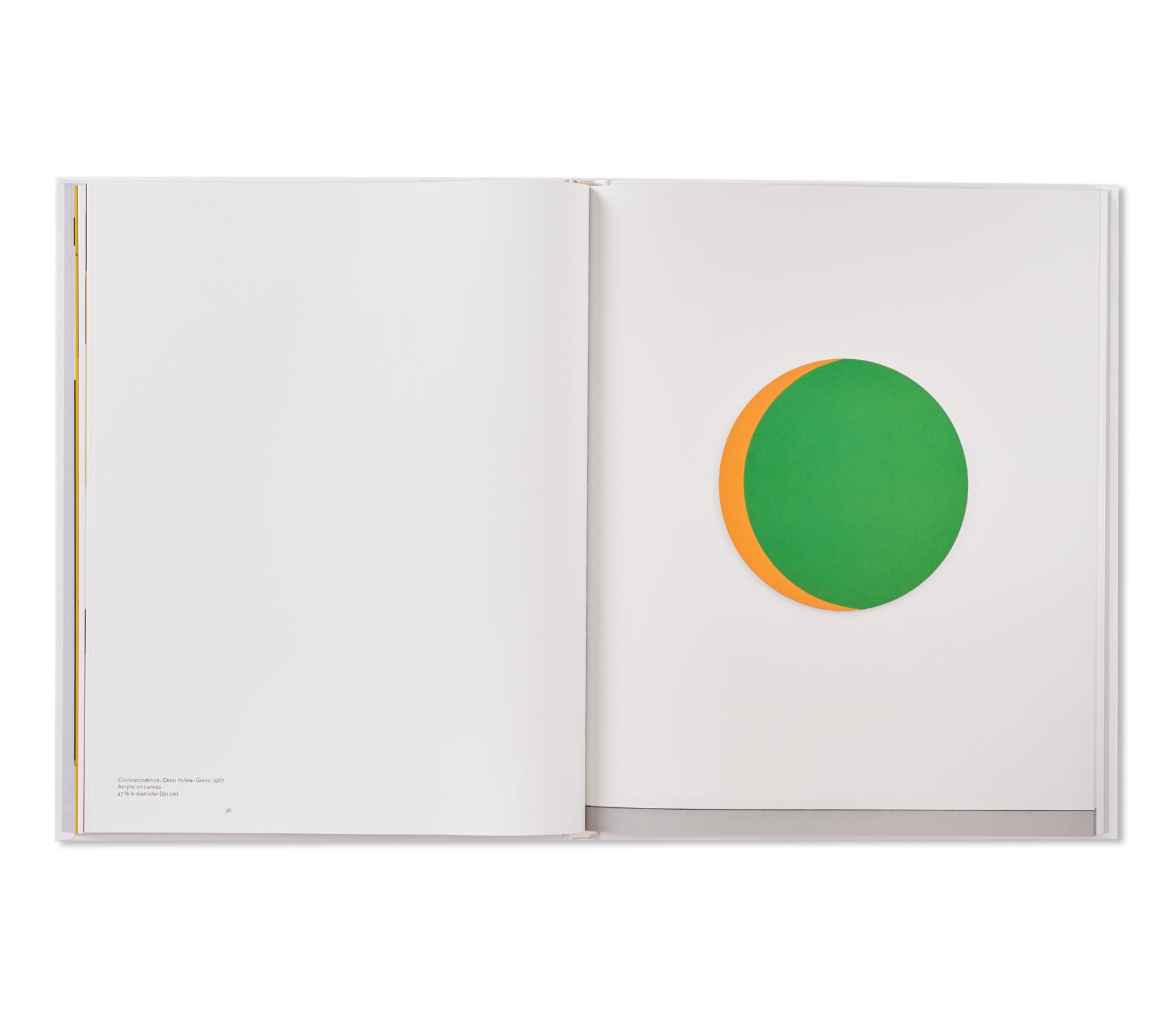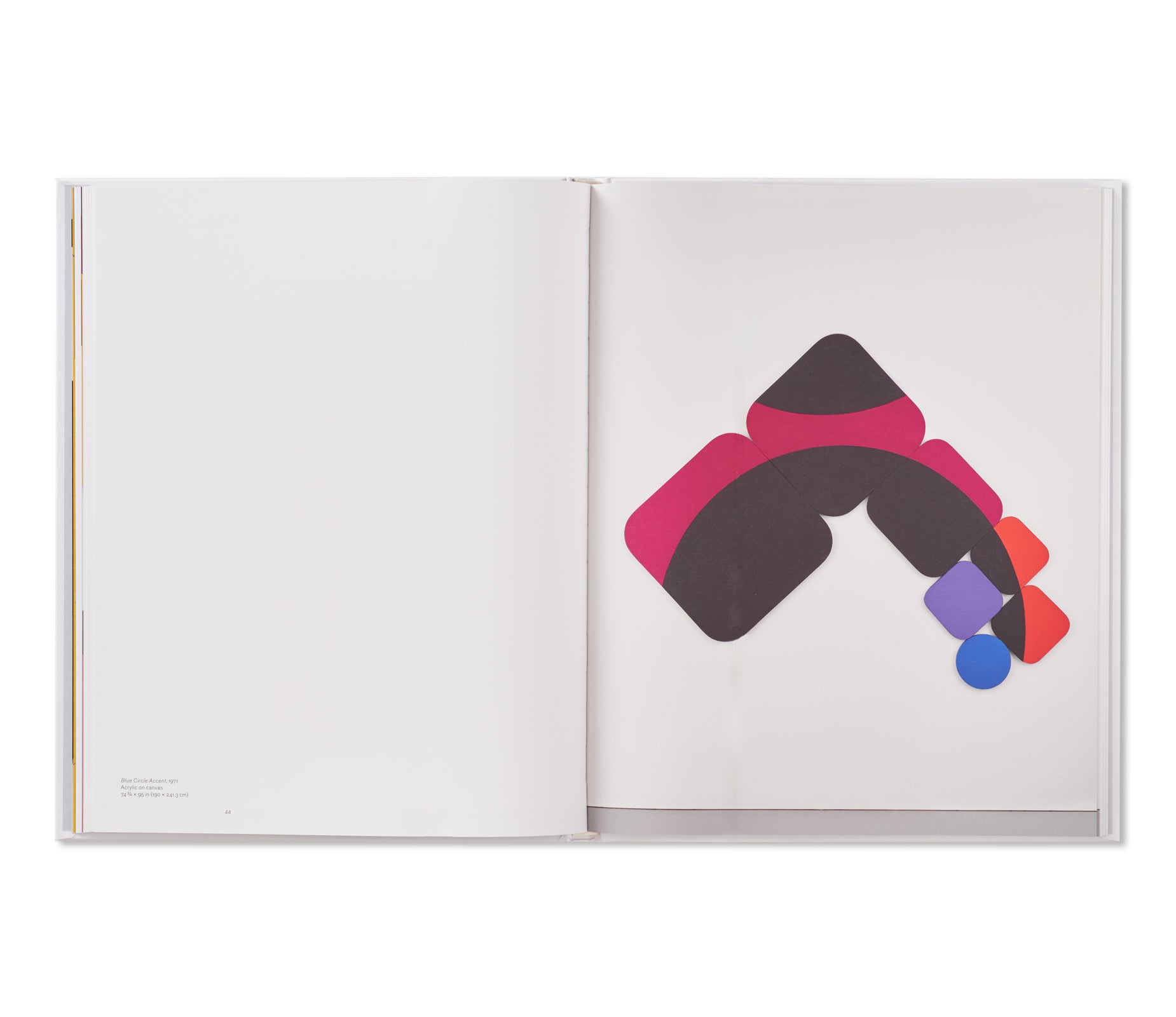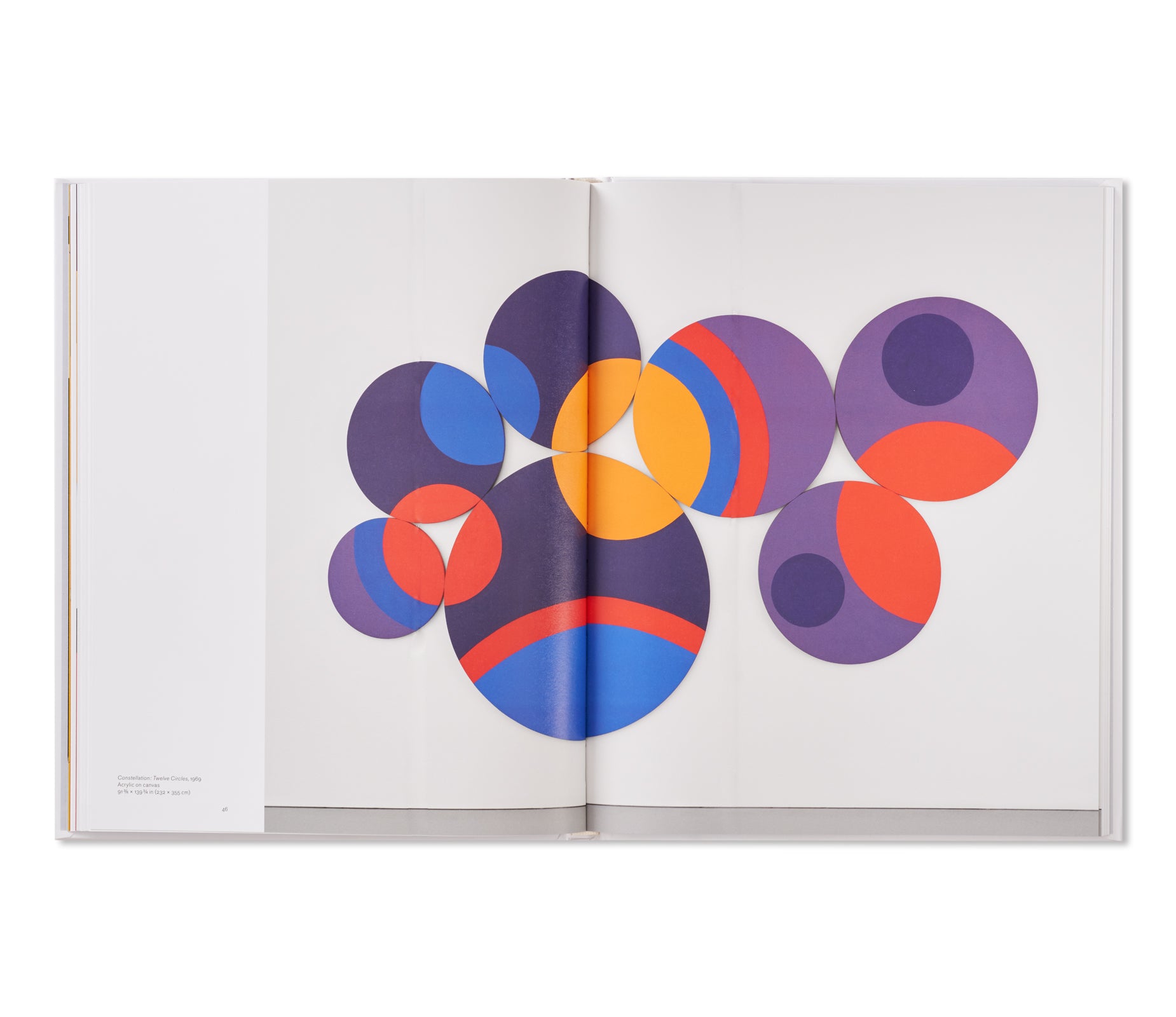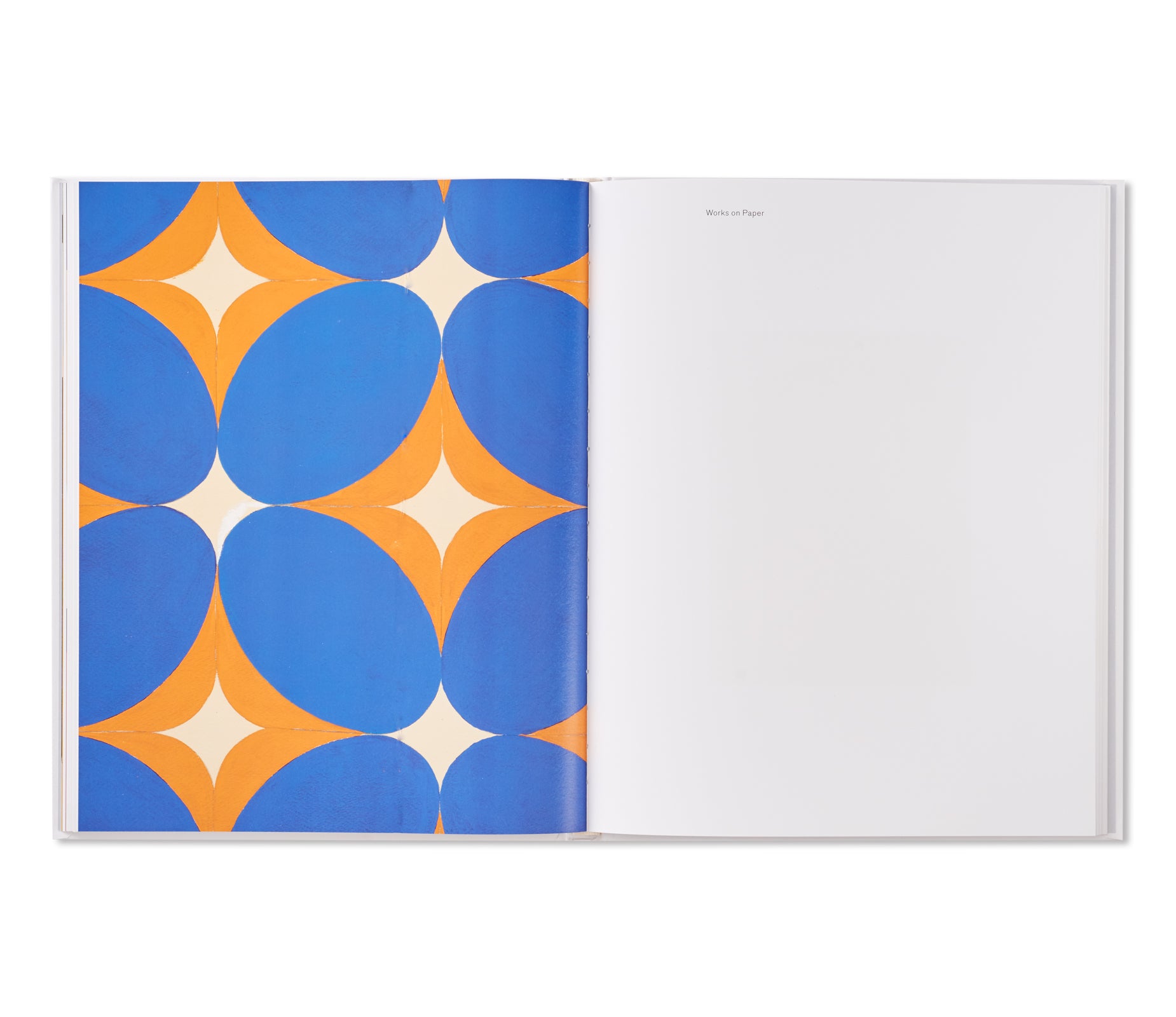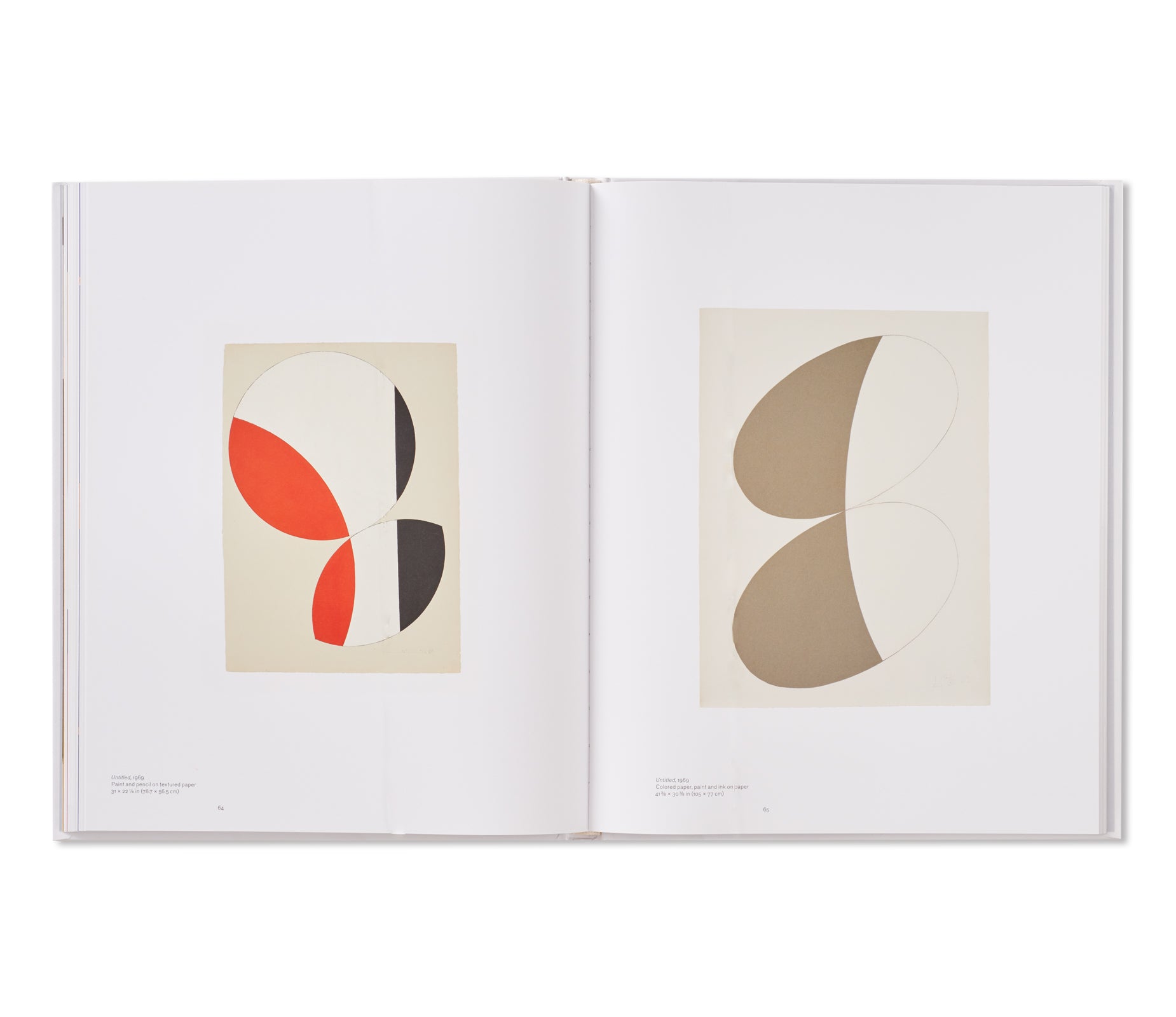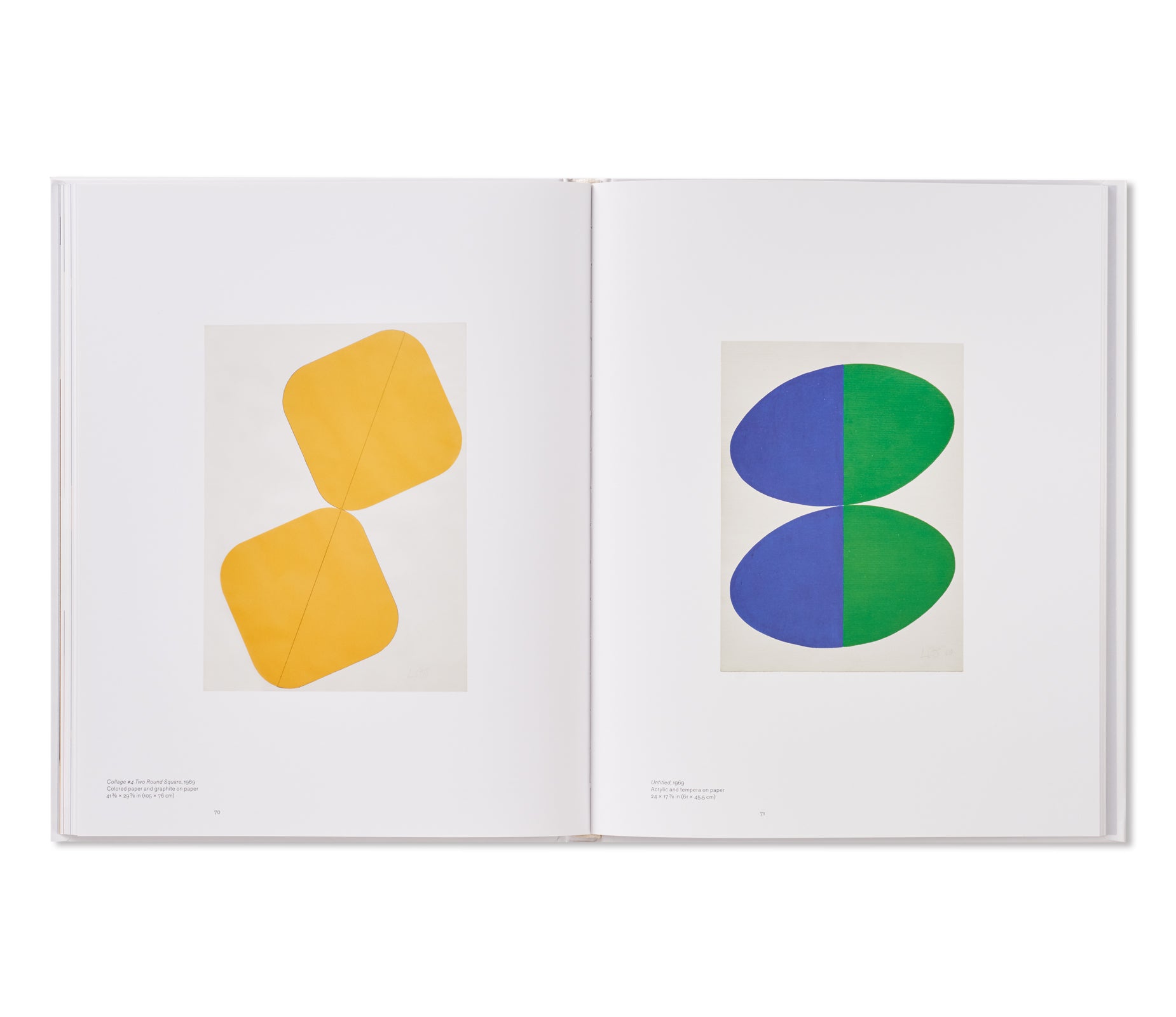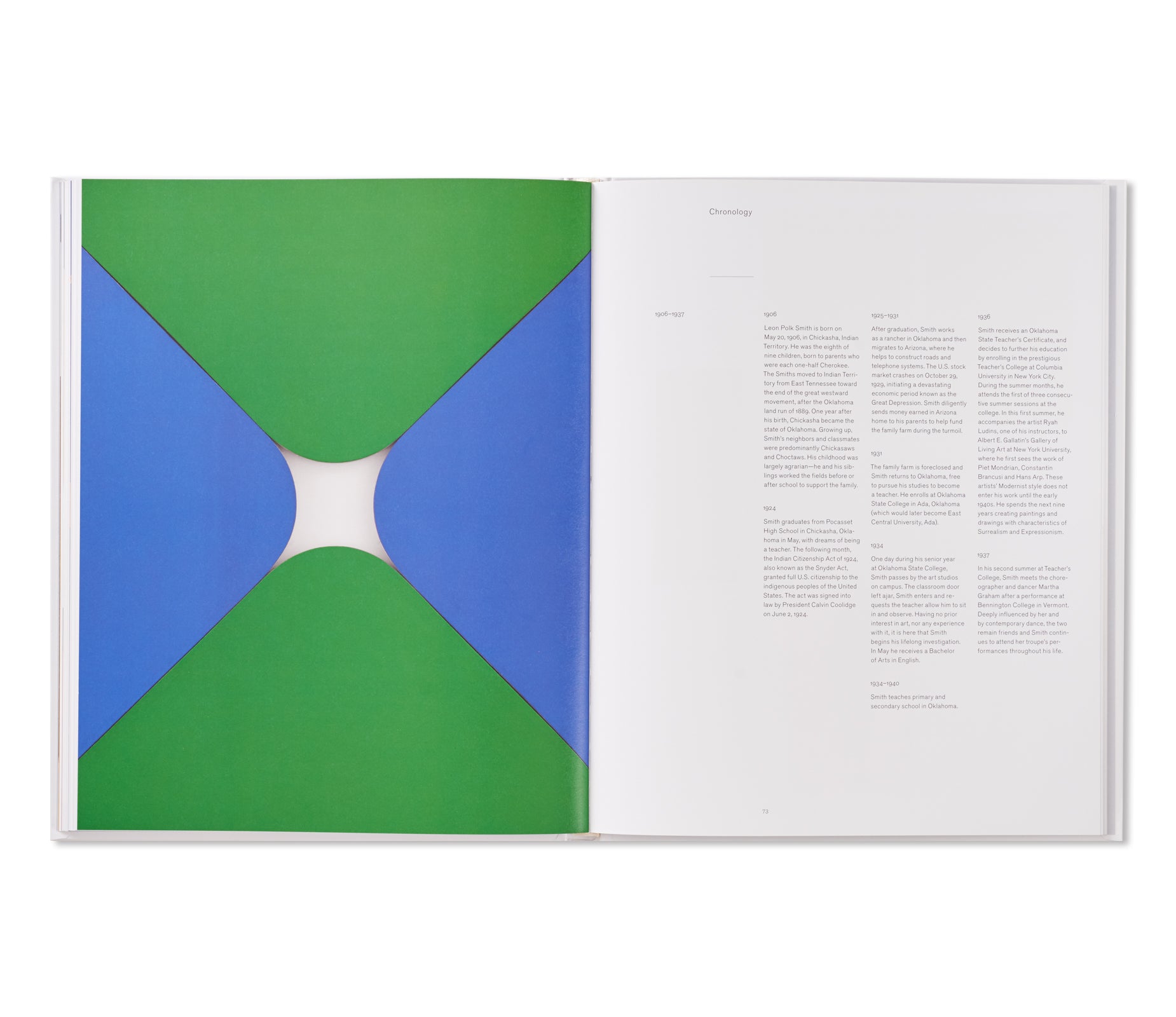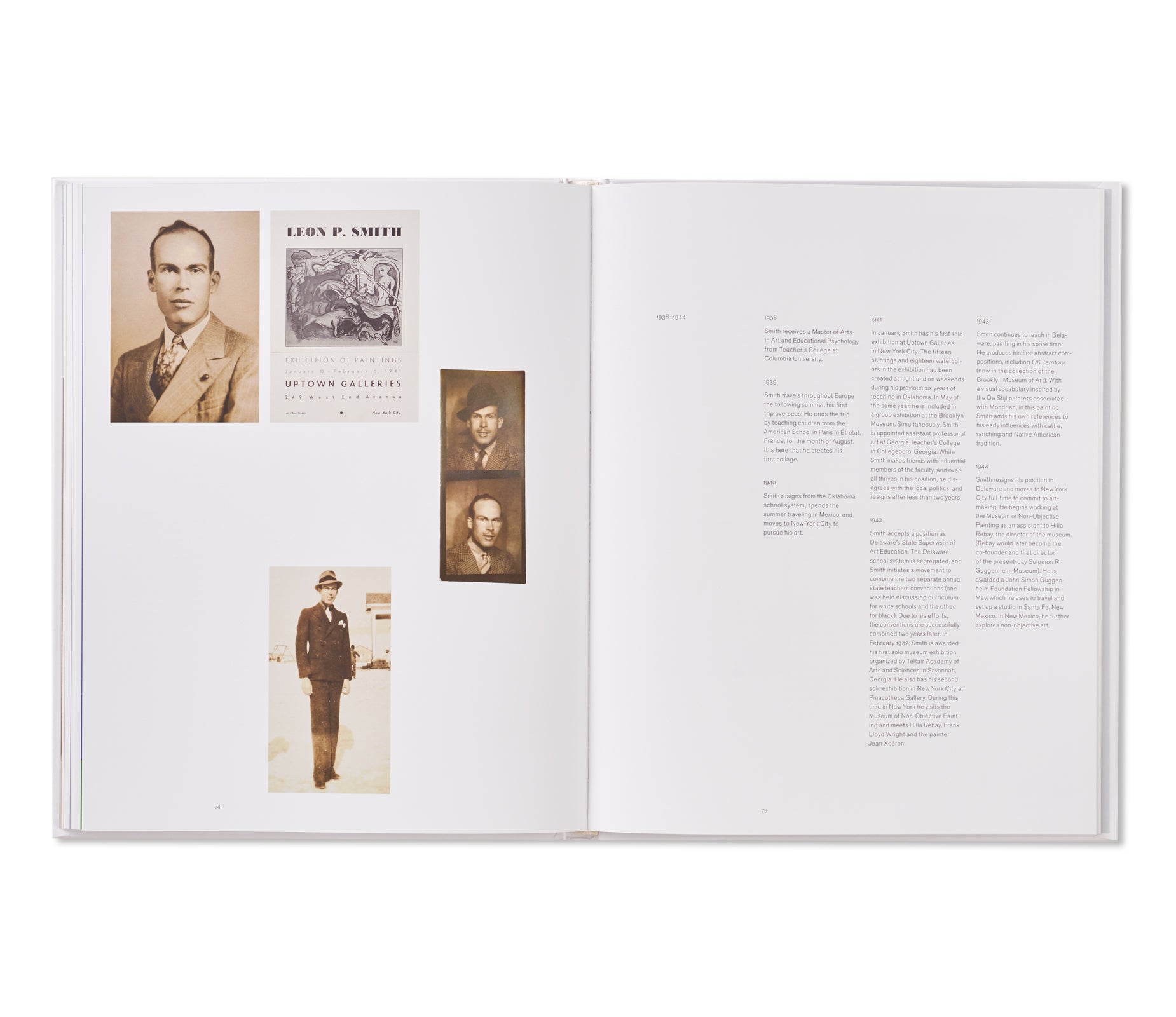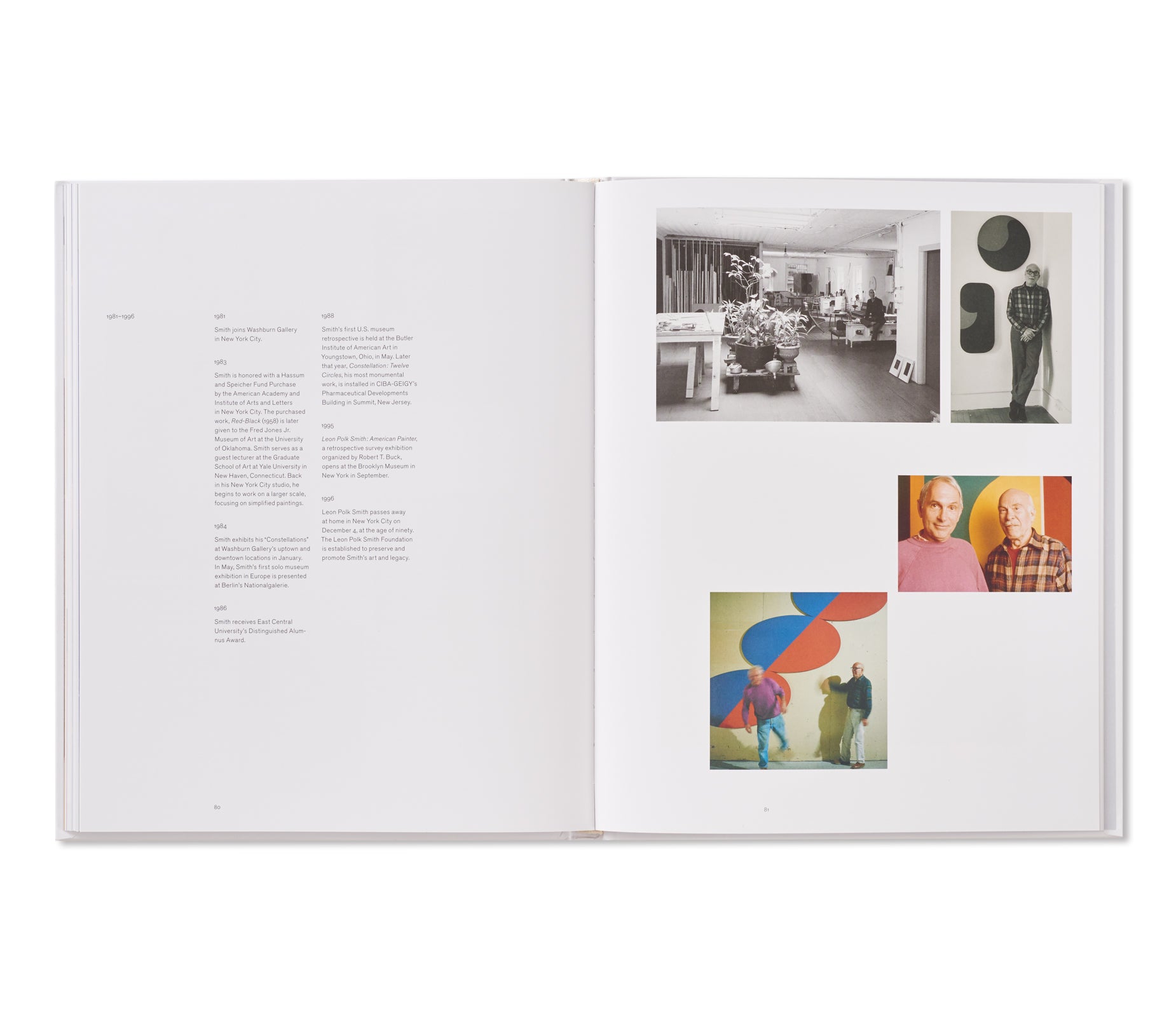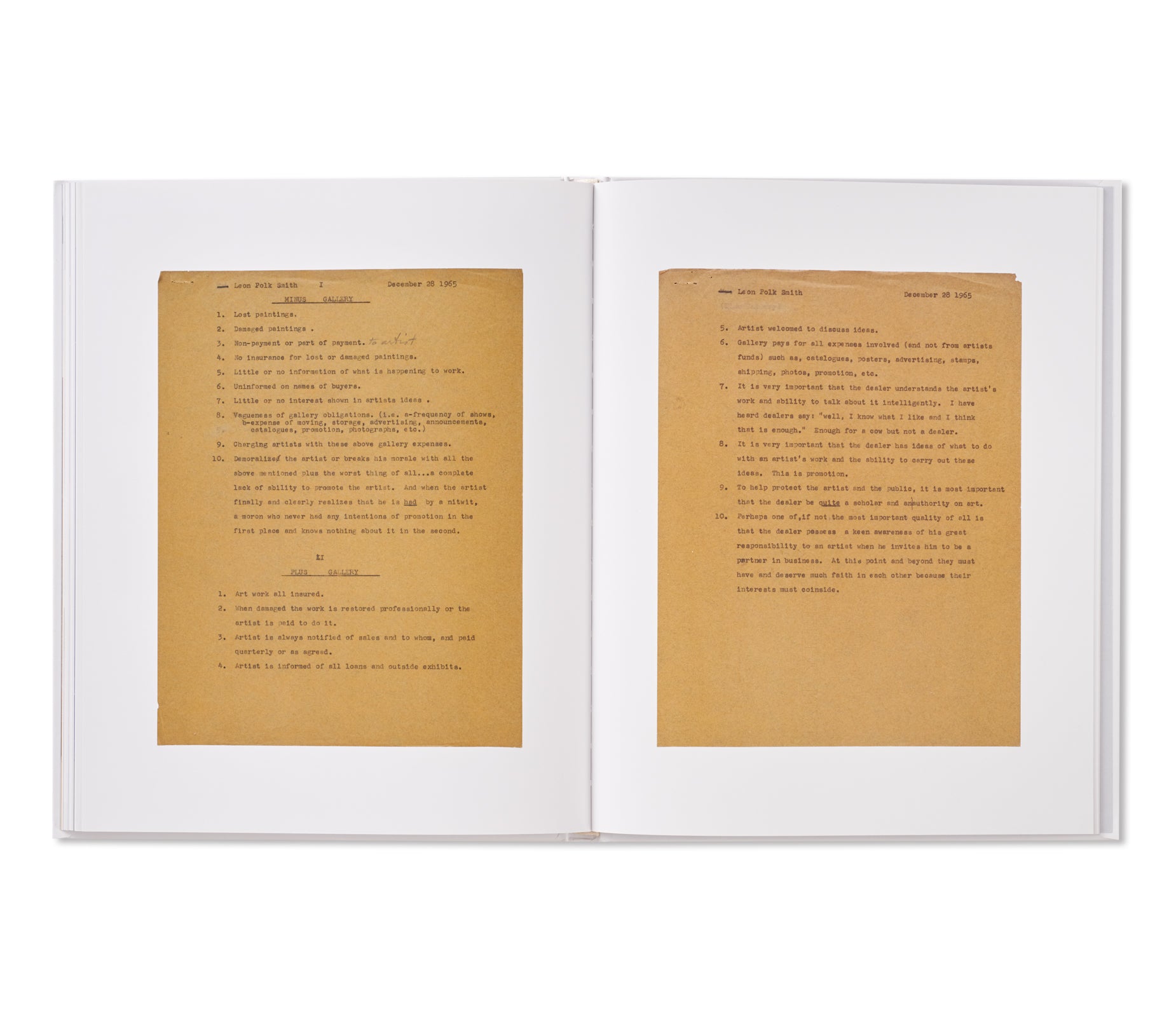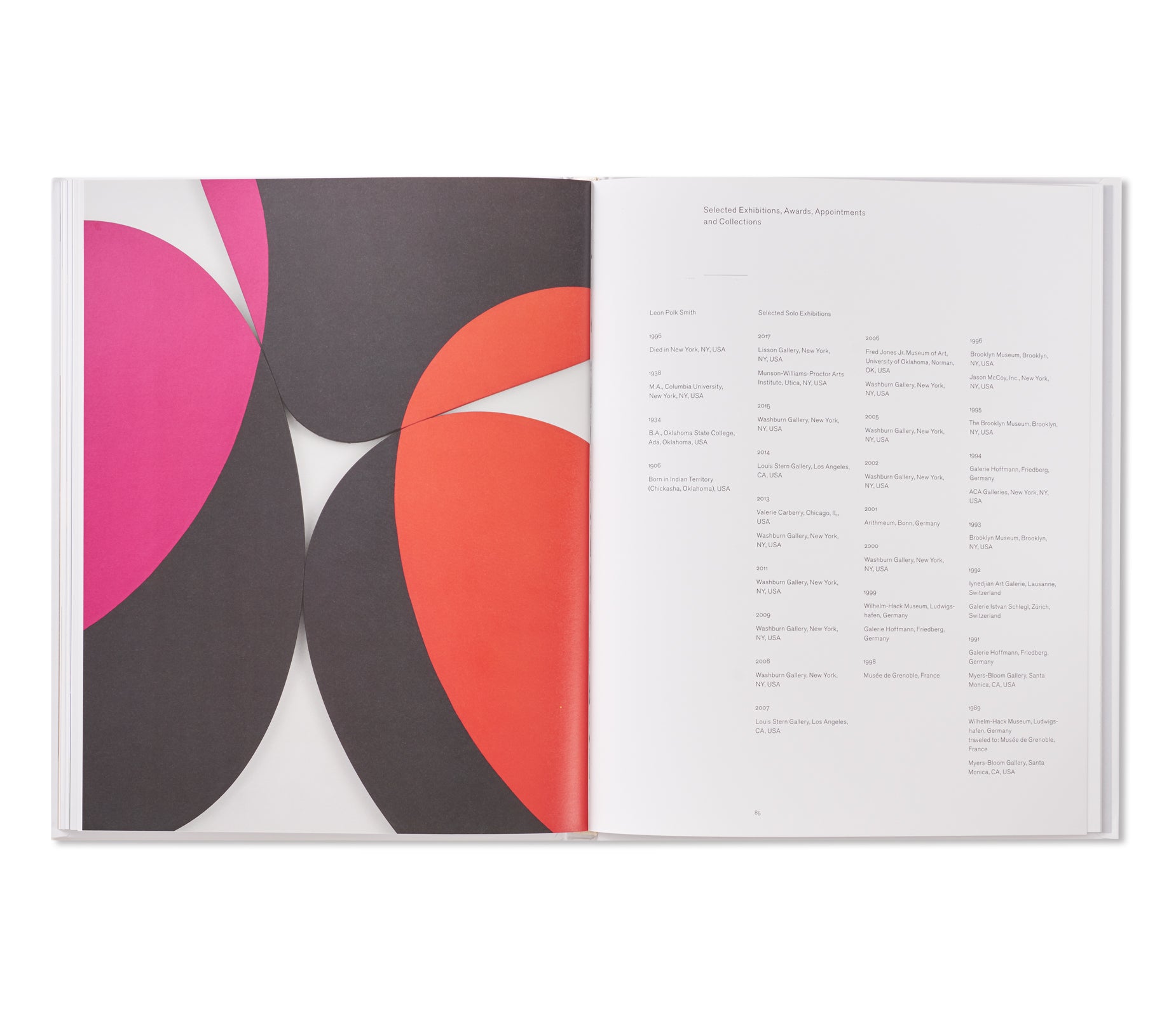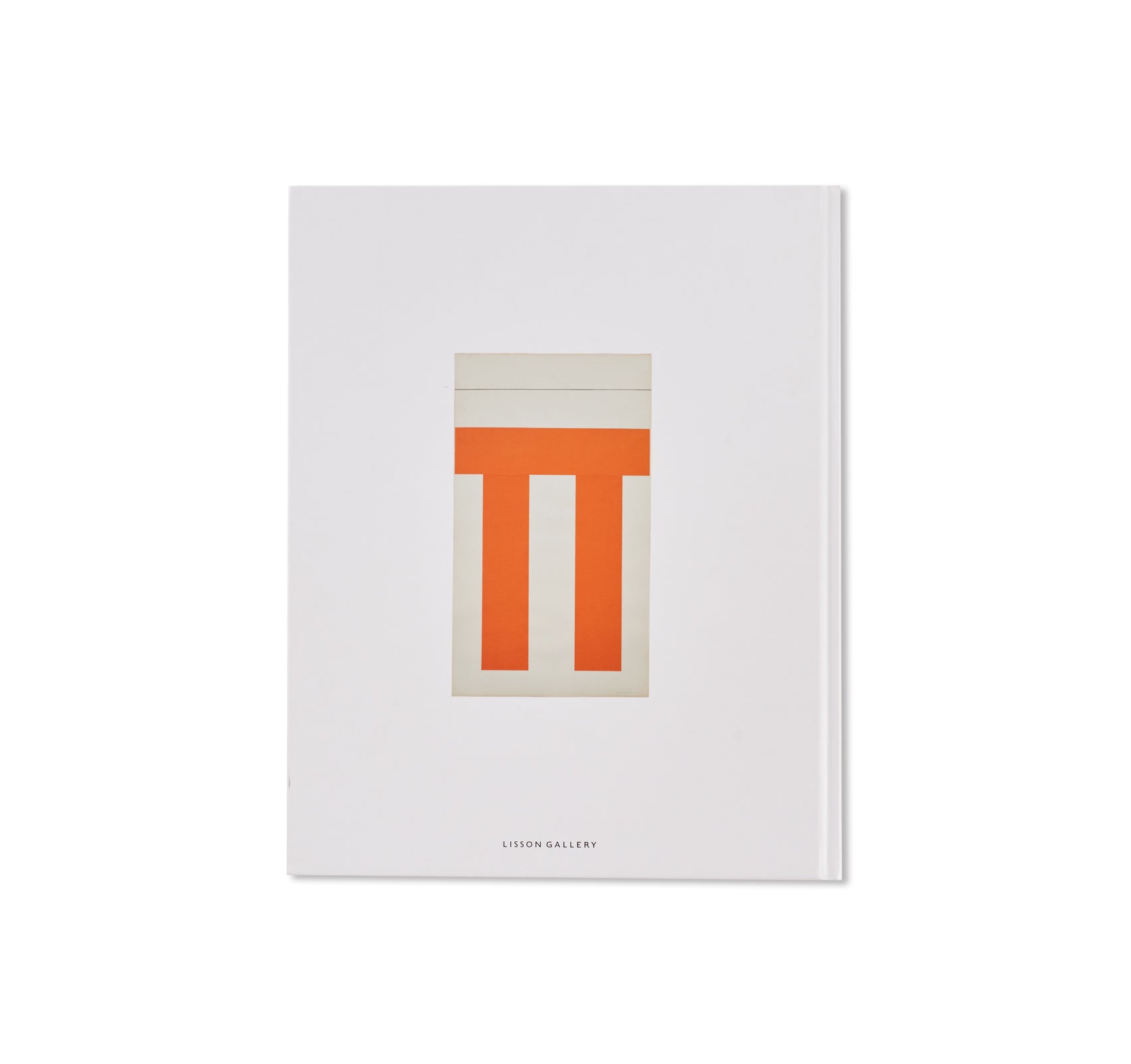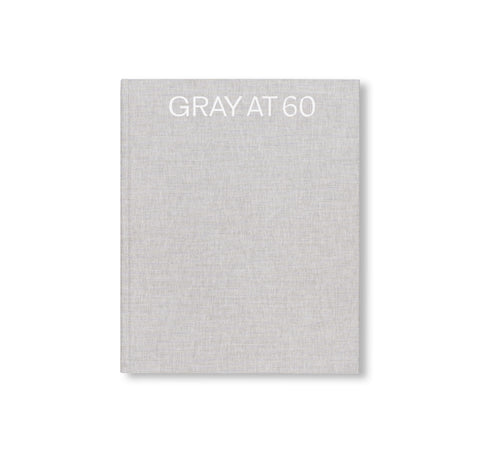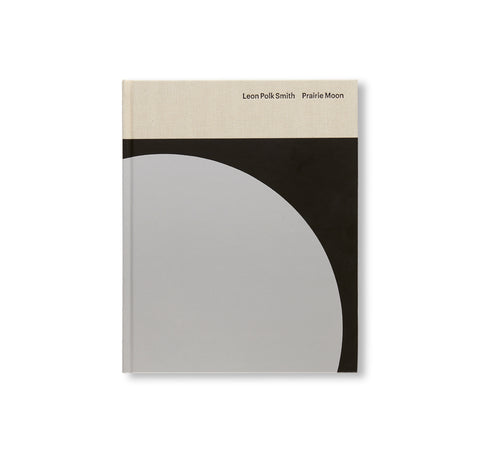LEON POLK SMITH by Leon Polk Smith
アメリカ人アーティスト、レオン・ポーク・スミス(Leon Polk Smith)の作品集。ミニマリスト・アートの一派であるハード・エッジ(※註)の先駆者の一人とされる作者は、1950年代後半から1960年代前半にかけて制作した特徴的な形のキャンバスを用いるシリーズ『Correspondences』と『Constellations』で一躍有名になった。作者の作品と言えば、正確さと時に不規則性を併せ持つ二つの形が色鮮やかに描かれた大型のキャンバスが思い浮かぶかもしれない。当時、ミニマリストたちはモダニズムから遠ざかっていったが、作者はモダニストの伝統である形式的かつ合理的な構成要素を進化させることに心血を注いでいた。ネイティブ・アメリカンの芸術的な伝統から着想を得ていたスミスは、円形など標準的な形ではないキャンバスをよく用いていた。1996年にはブルックリン美術館で回顧展が開催されており、彼の作品はニューヨークのソロモン・R・グッゲンハイム美術館やホイットニー美術館、ニューヨーク近代美術館、エルサレムのイスラエル美術館、アルゼンチンのブエノスアイレス現代美術館、ケルンのルートヴィヒ美術館、ベルリンの新ナショナルギャラリーなど世界中の美術館や博物館、個人のコレクションに収蔵されている。本書はニューヨークの「Lisson Gallery」で2017年9月8日から10月21日に開催された展覧会に伴い出版された。
※註 色面をシャープな輪郭で処理する作風の絵画
Considered one of the founders of the hard-edge style of Minimalist art, Leon Polk Smith (1906–1996) rose to prominence in the late 1950s and early 1960s with his distinctive shaped canvas series — the ‘Correspondences’ and the ‘Constellations’. These large canvases typically consist of two vibrantly-coloured painted shapes defined by a precise but often irregular contour. While Minimalist peers of his during that time were shifting away from Modernism, Smith was wholeheartedly advancing the formal and rational elements of the Modernist tradition. Much of Smith’s work was inspired by Native American artistic traditions and he frequently used canvases which were round or other non-standard shapes. A retrospective of Smith’s work was organized by The Brooklyn Museum in 1996. His work is in numerous public and private collections worldwide including the Solomon R. Guggenheim Museum, New York; The Museum of Modern Art, New York; Whitney Museum of American Art, New York; Israel Museum, Jerusalem; MACBA – Museo de Arte Contemporáneo de Buenos Aires, Argentina; Museum Ludwig, Cologne; and Neue Nationalgalerie, Berlin. Published on the occasion of an exhibition at Lisson Gallery, New York (8 September – 21 October 2017).
